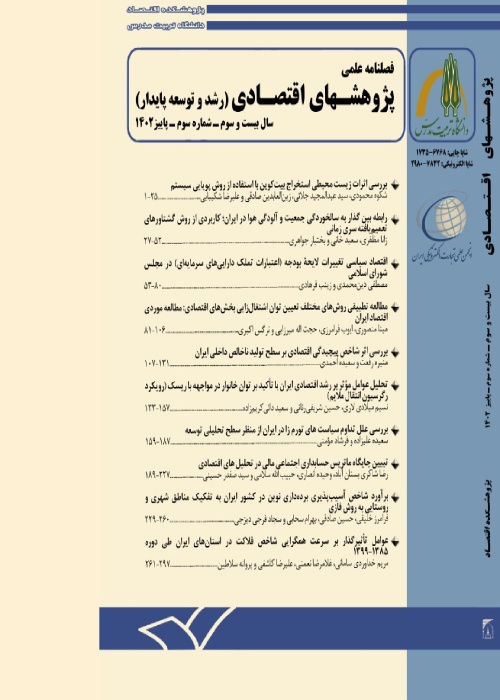Role of Mutual funds in Economic Growth in Iran
Aim and Introduction :
The development of financial markets is critical for economic growth. One of the most important financial markets is the capital and stock market, where the prosperity of the stock market and financing through the stock market can develop any country's economy. Capital market development requires the efficient performance of financial intermediaries, including mutual funds. Iran’s economy has always faced the problem of insufficient liquidity and financing for production sectors. As a financial tool, mutual funds can moderate this problem with their existing potential. Therefore, the study aims to investigate the probable effect of mutual funds on economic growth.
In the previous studies that have been done in this field, the descriptive-analytical aspect of the subject has been discussed. But these studies didn't provide an appropriate framework for analyzing the effect of mutual funds on economic growth. For this purpose, in the present study, based on the theoretical literature, a general equilibrium model has been designed, and the output of this model is obtained according to the optimization of different sectors of the economy. Assume a closed economy where mutual funds are investors with information and allocate capital to high-productivity firms. The economy has a single period with two production components, a representative mutual fund, and a representative household. We assume a high-productivity firm (H) and a low-productivity firm (L) with an equal number of producers. Both firms can obtain funds by issuing new stocks in the primary market. There is one representative mutual fund in the economy that can invest on behalf of the representative household. Therefore, the fund can invest as much as the fund flows (F) received from the household at the beginning of the period. We assume the mutual fund has sufficient access to information and production technology and can detect high-productivity firms. The household seeks to maximize utility, and the proposed utility function consists of only consumption. As utility and consumption are positively related, utility maximization is equivalent to consumption maximization. However, since the present study adopted a single-period economy, consumption equals income. Thus, maximum utility is represented by maximum income. Initial capital (W) can be directly invested in the primary market or indirectly invested in the secondary market by the mutual fund. This framework is a new aspect and the main contribution of research in this field. The output of the model is estimated using the GMM method for the period 2010:2 to 2020:4.
According to Table 5, most coefficients are statistically significant. The first lag of GDP was expectedly found to have a positive, significant impact on the GDP level and, thus, economic growth. Mutual fund investment was observed to have a positive, significant impact on GDP; a 1% rise in fund investment, on average, leads to a 0.473% increase in GDP. This finding is consistent with our theoretical framework. We expect mutual funds’ investments in the primary market, positively impact GDP since mutual funds have an information advantage over individual investors. Thus, they can optimally allocate resources to high-productivity firms (i.e., mutual funds have a higher ability than individual investors to identify high-productivity firms in light of their information advantage). The household wealth coefficient was estimated to be 0.255, suggesting that a 1% increase in the household’s wealth raises GDP by 0.255% on average. This finding is consistent with economic theories. The interaction of wealth and fund investment was estimated to have a coefficient of 0.257, implying a significant relationship. This coefficient was expectedly found to be positive, consistent with modeling. The interaction of fund flows and fund investment significantly affects GDP with a coefficient of -0.174. This coefficient was expectedly found to be negative, consistent with modeling. Fund flows were estimated to have no significant impact on GDP. Although it was found to have the expected sign, it has an insignificant impact on GDP and thus cannot be interpreted. The coefficient of the secondary market return was found to be significant only at a confidence level of 90%.
Overall, mutual funds have a positive impact on GDP. These funds may improve the performance of Iran’s financial markets if they acquire an appropriate position in the financial market. A large number of individual traders have begun to trade on Iran’s stock market without financial knowledge and suffered massive losses in 2020-2021. If the mutual fund sector is active in Iran, in addition to the optimal allocation of resources, it can also help people for investment in the stock market and prevent crises such as 2020-2021. Eventually, the policy recommendation is that policymakers pay more attention to the development of mutual funds in short- and long-term policies.
- حق عضویت دریافتی صرف حمایت از نشریات عضو و نگهداری، تکمیل و توسعه مگیران میشود.
- پرداخت حق اشتراک و دانلود مقالات اجازه بازنشر آن در سایر رسانههای چاپی و دیجیتال را به کاربر نمیدهد.





